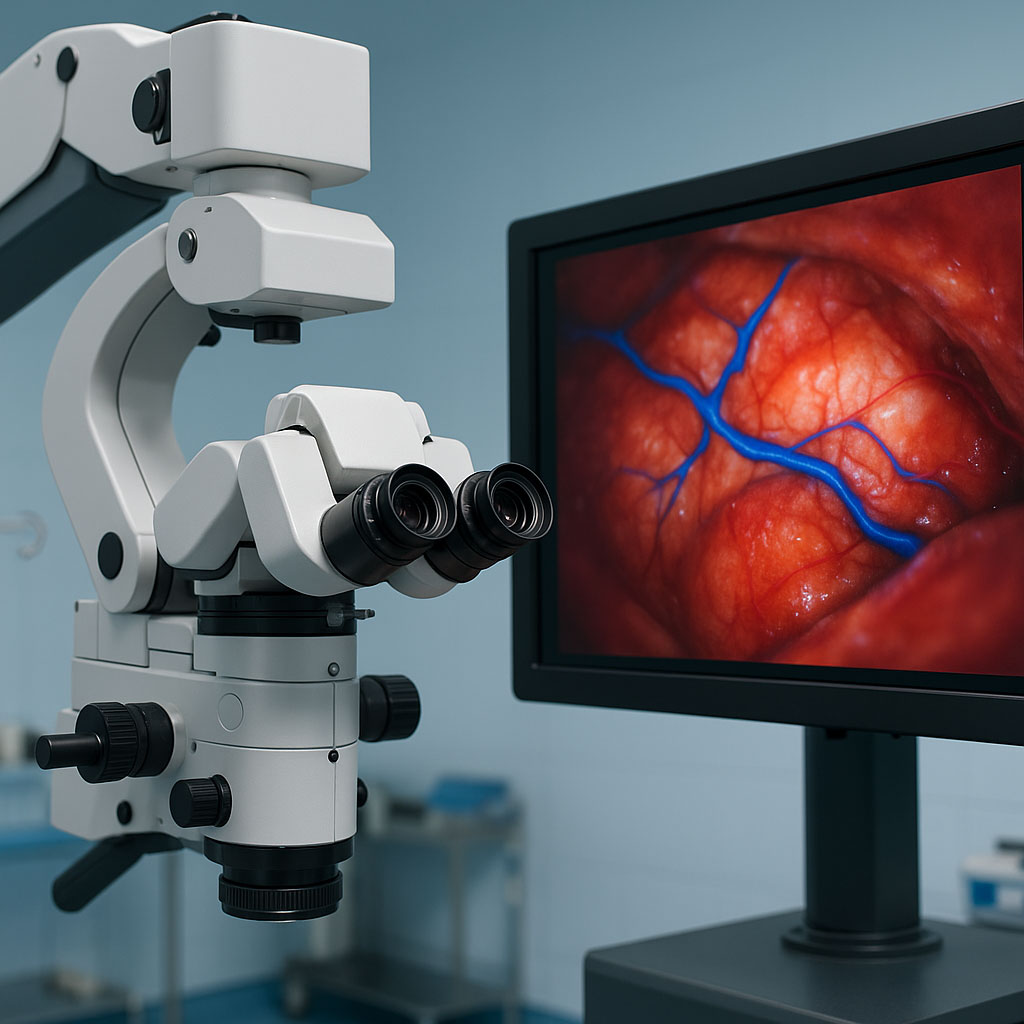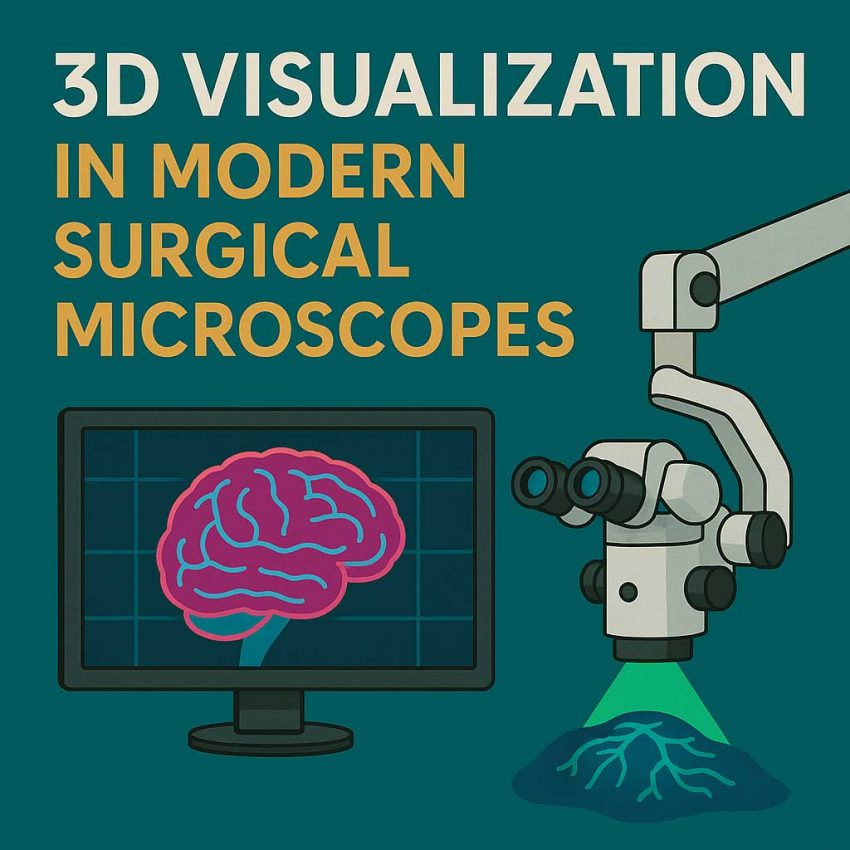Discover how 3D visualization in modern surgical microscopes enhances depth perception, precision, and ergonomics in operating rooms—redefining surgical performance across specialties like neurosurgery, ENT, and ophthalmology.

In the rapidly advancing field of surgical technology, 3D visualization is transforming how surgeons interact with the operating field. Modern surgical microscopes equipped with 3D capabilities are redefining precision, depth perception, and collaborative efficiency in the operating room. This cutting-edge technology is not just a futuristic concept—it’s already being adopted in neurosurgery, ENT procedures, ophthalmology, and beyond.
What Is 3D Visualization in Surgery?
3D visualization refers to the real-time, stereoscopic display of the surgical field that provides depth perception and spatial awareness beyond what traditional 2D microscopes offer. Unlike flat 2D images, 3D imaging delivers a more life-like representation, enabling surgeons to perceive the position, depth, and orientation of tissues and instruments with remarkable clarity.
This is made possible by dual optical pathways and high-definition cameras that replicate binocular human vision, projecting the view on a 3D monitor or into stereoscopic oculars. The result: more intuitive, safer, and more precise surgeries.
How 3D Surgical Microscopes Work
Modern surgical microscopes with 3D technology utilize two synchronized optical systems or camera modules to capture images from slightly different angles—just like how human eyes work. These images are processed and displayed on a high-resolution 3D screen, where surgeons wear polarized or active-shutter glasses to view the surgical site in full depth.
Some systems integrate 4K resolution, heads-up displays, and digital overlays such as navigation cues, blood flow indicators, or tumor margins—enhancing both awareness and control during procedures.
Key Advantages of 3D Visualization in Surgery
The integration of 3D technology into surgical microscopes brings numerous benefits, including:
1. Enhanced Depth Perception
The biggest leap from 2D to 3D is the ability to accurately gauge the depth of structures. This is critical in microsurgery where millimeter-scale precision is required—such as in brain, spine, eye, and nerve surgeries.
2. Improved Ergonomics
With heads-up display systems, surgeons no longer need to bend over the oculars. Instead, they can maintain an upright posture while viewing a large monitor. This reduces neck, shoulder, and eye strain, improving surgeon endurance in long procedures.
3. Better Collaboration and Training
3D visualization makes it easier for the entire surgical team—including assistants, residents, and observers—to see exactly what the lead surgeon sees. This fosters improved communication, faster response times, and better educational value.
4. High-Precision Manipulation
The 3D view enables more accurate placement of instruments and more controlled tissue handling, particularly important in delicate surgeries such as removing tumors near vital structures or stitching tiny blood vessels.
5. Integration with Digital Technologies
Advanced 3D microscopes can integrate with surgical navigation systems, robotic arms, and AI-based imaging software, creating a digitally augmented operating environment.
Applications Across Surgical Specialties
3D visualization is finding use in a broad range of surgical fields:
Neurosurgery: For tumor resection, aneurysm clipping, and spinal procedures where tissue layers are closely packed.
ENT and Skull Base Surgery: Provides detailed views of complex, narrow anatomical regions.
Ophthalmology: Used in cataract, retinal, and corneal surgeries where delicate tissue manipulation is required.
Plastic and Reconstructive Surgery: Enables fine suturing of nerves, vessels, and tissues with better spatial judgment.
Dental and Maxillofacial Surgery: Allows precision drilling, nerve identification, and implant placement.
3D vs. Traditional Microscopy: A Paradigm Shift
Traditional surgical microscopes have long been effective tools, but their limitations—especially the lack of depth perception on external monitors—can hinder complex procedures. With 3D surgical visualization, surgeons experience:
| Feature | Traditional Microscopes | 3D Surgical Microscopes |
|---|---|---|
| Image Depth | Flat 2D | True stereoscopic depth |
| Viewing Method | Through oculars | Heads-up or 3D monitor |
| Team Involvement | Limited | Shared 3D view |
| Ergonomics | Fatiguing | Surgeon-friendly posture |
| Teaching & Training | Less immersive | Highly visual and collaborative |
This leap represents not just an upgrade in tools but a fundamental shift in how surgeries are taught, performed, and evaluated.
Challenges and Considerations
As with any technology, 3D visualization comes with some challenges:
Cost: High-end 3D surgical microscopes represent a significant investment.
Learning Curve: Surgeons and staff may need time to adapt to the new visual format and ergonomics.
Compatibility: Integration with existing OR infrastructure and data systems can be complex.
Eye Fatigue: Some users may experience eye fatigue from prolonged use of 3D glasses, though this is improving with newer systems.
Despite these challenges, the long-term benefits often justify the initial hurdles.
Future Outlook
The future of 3D visualization in surgical microscopes looks promising, especially with emerging trends like:
Autostereoscopic displays that don’t require glasses
Real-time AI analysis overlaid onto 3D views
Virtual reality (VR) and augmented reality (AR) integration for planning and intraoperative guidance
Cloud-based recording and analytics for surgical performance review
As technology continues to evolve, 3D visualization will become a standard feature in the modern digital operating room.
Conclusion
3D visualization in modern surgical microscopes marks a significant milestone in the evolution of surgical precision and visualization. With enhanced depth perception, better ergonomics, and improved collaboration, this innovation is setting new benchmarks in safety and effectiveness across surgical disciplines.
As hospitals and surgical centers adopt these systems, patients can expect better outcomes and surgeons can perform at higher levels of accuracy and comfort. In a future where precision is paramount, 3D technology is leading the way.
